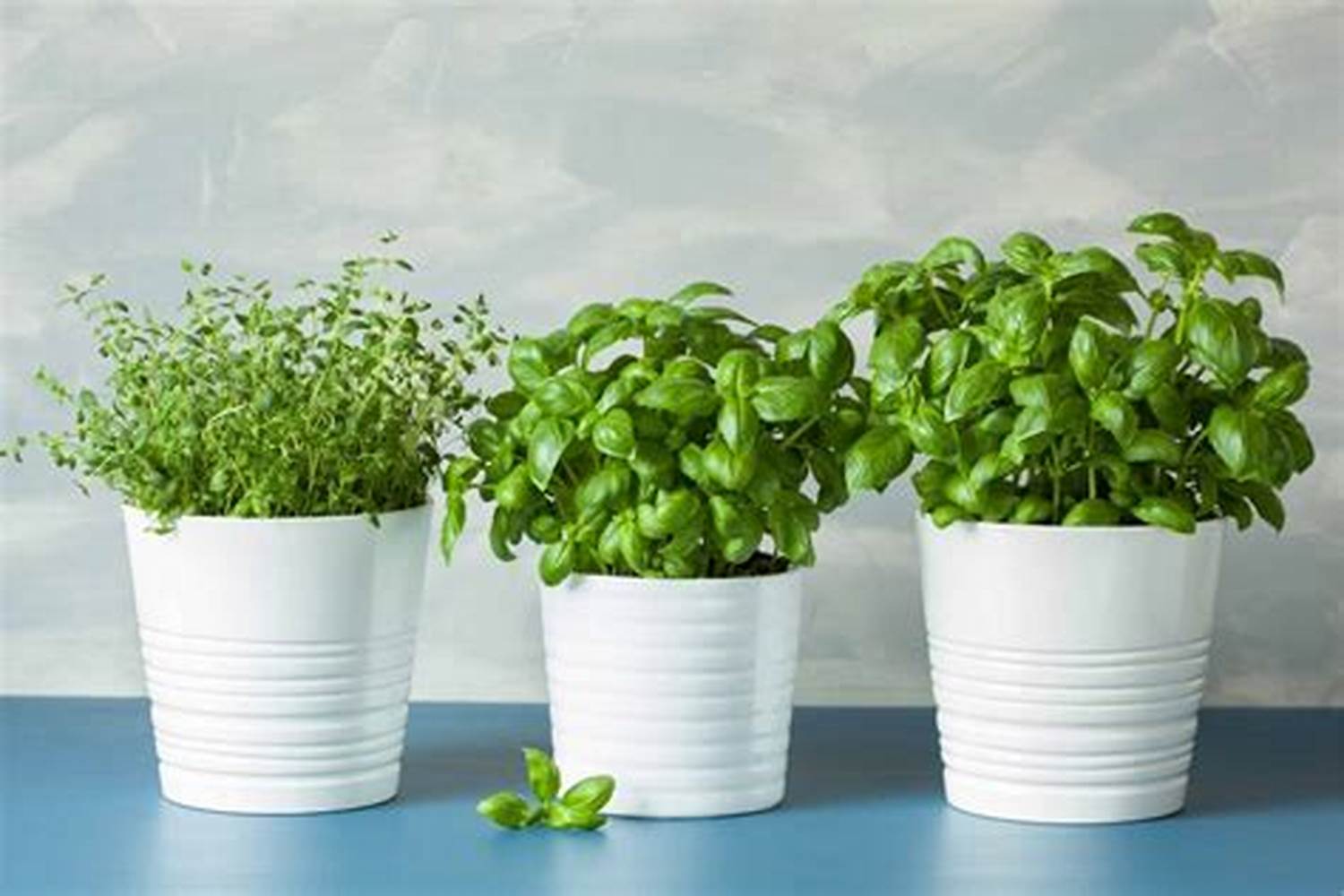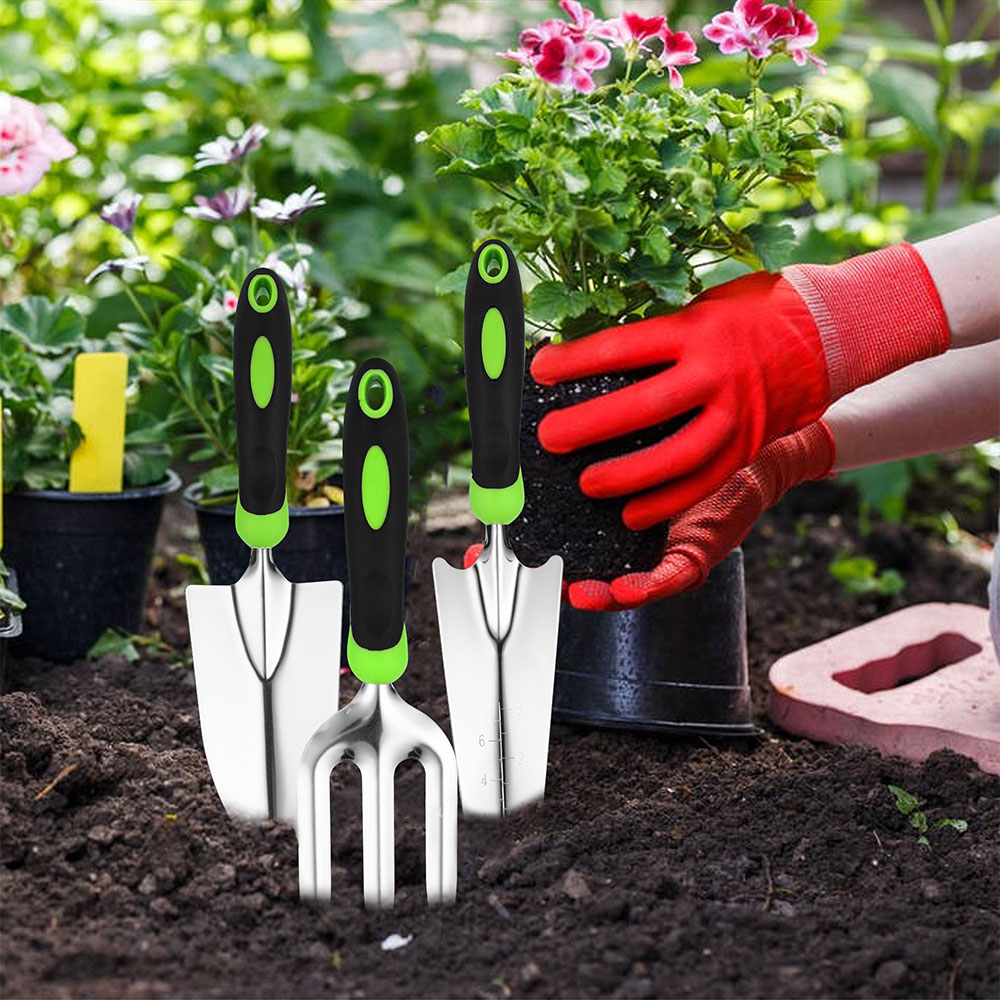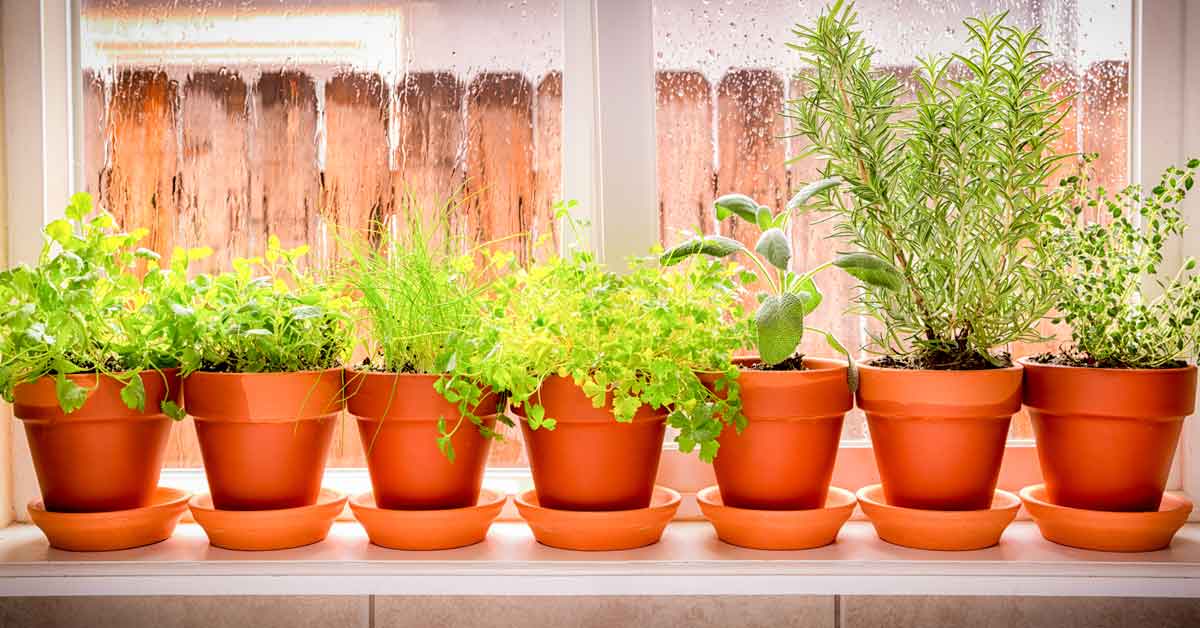Chives make a cheerful addition to a window box or grow just as well in pots by themselves.
The handsome sweet bay growing in a smart tub must surely be the classic example of an herb as a contained plant, and I am sure that someone who is no gardener may think that the plant is never grown in any other way, than confined and carefully groomed. Yet bays will grow high, wide and handsome.
This is the only tree among the herbs, and it is interesting that we see it confined more than any other. You might think that the tree could be the most difficult type of herb to grow in a container. It has, in fact, proved to be the most popular. It is so attractive when grown in this way that it is often chosen for its appearance and not for its use.
This method of growing a bay is international. Surely this should encourage us to try growing other herbs in the same way? If it is possible to grow a tree in a pot, we should be able to grow the shrubby kinds equally well, and if these will grow then surely the herbaceous kinds will tolerate confinement also? And indeed this is so!
For some years, I grew many herbs in containers high on a roof in the center of the city, and in these exceptional conditions, I learnt a great deal about these plants. I found for instance that mint, which is said to prefer a moist soil in a shady spot in a garden, would grow quite well in light soil in a pot. Actually I raised good crops in pots and boxes, although these had to be watered constantly during hot and dry spells—and it can get very hot indeed in a roof garden!
Mint certainly grew lusher in the few pots that stood in the shade, but I proved that you can grow mint in a pot in a hot situation. However, fail to water it properly and you can expect trouble, as a rule in the shape of red spider.
Parsley is also said to prefer moist yet fertile soil, but again I planted parsley in the stone trough on the lower roof, where it confounded all the experts. It grew, flourished, flowered, dropped seed and reproduced itself vigorously in soil, which was constantly drying out and in a place which was windswept and sunbaked.
One would, expect thyme to enjoy a baking since we so often find it growing wild on some exposed and sunny bank. This also grew well up in the sky, and flowered prettily. Even bees, in the heart of the city, found it when it bloomed. Fennel, sage, chives and lavender were other roof garden tenants. These were grown in large containers or in raised beds around the perimeter of the flat roof.
Having begun so well, and so high, I have since had no qualms about growing herbs in containers at ground level. They can look most attractive, and now that there are so many plant containers from which to choose, contained herbs can be designed to suit any setting. Provence pots on paved areas, smart white black-banded tubs in a cottage courtyard, stone, plastic, fiberglass, concrete troughs, bowls and saucers— all have their part to play.
Any good garden container will do. In one farmhouse I visited, all the herbs were grown outside the kitchen in great stone drinking troughs, warm with the sun in summer and so thick that they protected the roots in winter.
Slip mint roots inside a plastic bag to isolate the roots from other plants in the tub.
Let us begin in the place most dedicated to the contained garden, the outside window-sill. Here a window-box can become a prolific little herb garden, sufficient to supply the small family with a succession of fresh herbs. But it needs to be well designed. By this, I mean that plants likely to grow large, sage, rosemary and tarragon for instance, are best planted at the side of the box and the center kept for the smaller plants which are not likely to block out so much light from the room behind.
The box itself must be deep enough to hold adequate soil for plants which are to grow lush and will be cut frequently. It should never be less than six inches. Obviously you should also be concerned with visual effects and a very deep box can be ugly, so try to strike the happy medium.
It is best to decide which herbs you most often use and see if these will be suitable to grow outside your window before you begin planting. Fennel, for instance, would not do, for its roots grow too deep and its stem too tall (although it will grow in any deep container) but basil, chives, thyme, parsley, sage, marjoram, savory and tarragon (which grows tall but is kept short by cutting) will all do well.
If you use a lot of chives, plant a row of these along the front of the box and cut alternate plants to keep them uniform and looking as attractive as possible. Sage likes a really deep container, so if your window-box is shallow find a separate pot or tub for it.
If you want to include mint I suggest that you make a special division for it, so that although it is in the herb community, it is in fact planted separately. This way you isolate its roots which are inclined to wander and become invasive. The same thing goes for balm. A tile slipped down inside the box fitting across it closely will do for this.
Alternatively, slip the mint roots inside a plastic bag or the bag type of plastic pot. In the garden, some people plant mint in a bottomless bucket to keep its wandering roots under control yet providing means for the moisture to rise from the soil. A bag or pot does the same in a window box.
You can also have a window box inside your kitchen and the plants will thrive there so long as the light is good, and there are no domestic gas or oil fumes in the atmosphere. Unlike plants in the open air, those grown indoors are apt to become drawn and generally speaking, they are not so long-lived.
It is best if you arrange the box so that it can be turned constantly thus giving all the plants a spell in full light. This way growth will be more even and the plants less drawn. Many of the plastic plant troughs on sale are light to handle and are quite suitable for herbs.



